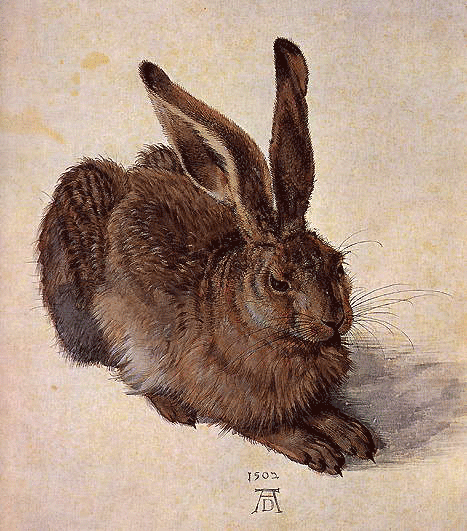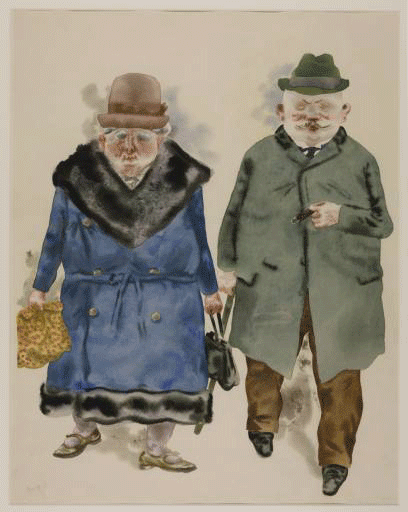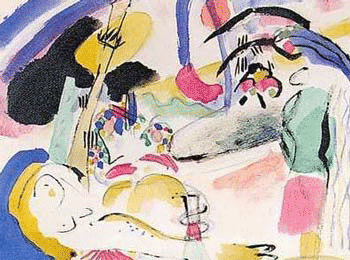Introduction
Watercolour is a type of paint in which its pigmentation is bound with Arabic glue. Due to this, they can be mixed with a great quantity of water without loosing its adherence to paper.
The main quality of this technique is the transparency of the colours. Its most noticeable weakness is the fact that it's very difficult to correct a mistake once it is incurred.
The most common way of working with watercolours is to respect the white colour of the paper in which we want to paint. We paint from light to dark tones, applying strokes of transparent colour.
However, it is a very flexible way of painting and, as you can see from these examples, they are pieces of great artists. The results you can achieve from water colours can vary greatly.

The first piece is the famous "Hare" by Durero. It is a very traditional sample of this technique. The colour has been applied in the manner of small strokes resembling the fur of the animal, superimposing layers upon layers of patient work.
The nest watercolour piece was painted by the expressionist Grosz. It shows a more open technique. It has wide washes in which the colours spread at his will (in comparison to the piece by Durero; so controlled, every stroke is carefully measured)

Our last example is a watercolour piece by Kandinsky, applying paint in a bold manner and full of strength. The colours are saturated and the shapes are abstract.


